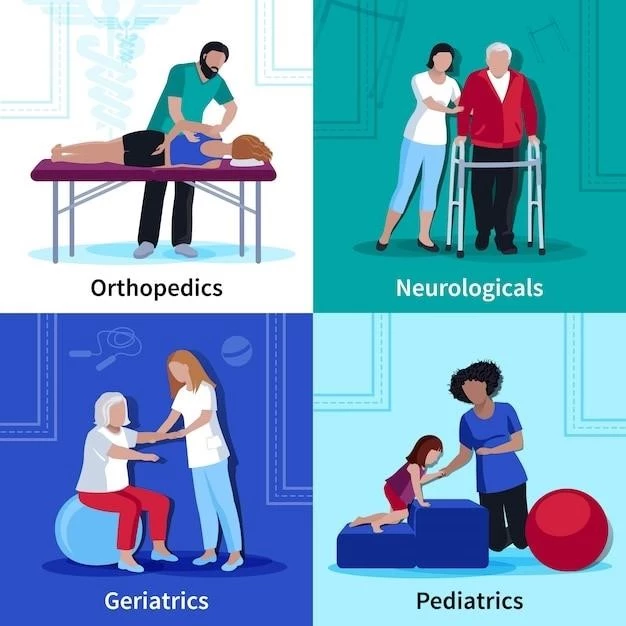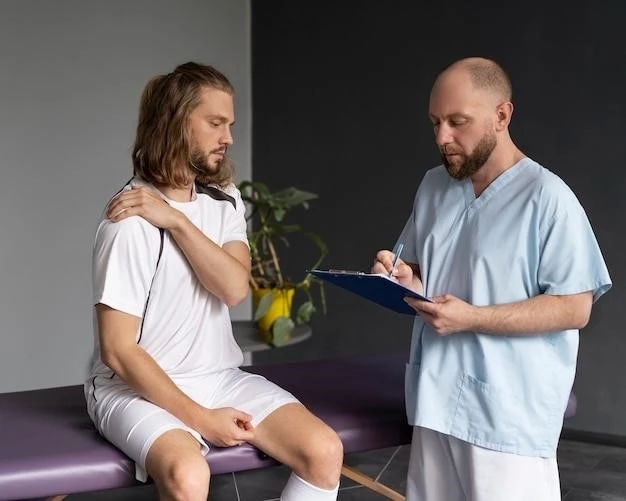Understanding Congenital Contractures
Causes of Congenital Contractures⁚ Learn about factors like genetic mutations or restricted fetal movement that can lead to contractures. Seek medical advice to understand specific causes in individual cases.
Causes of Congenital Contractures
Understanding the causes of congenital contractures is crucial for effective management. Factors like genetic mutations, abnormal development of muscles, tendons, or bones, or restricted fetal movement in the uterus can contribute to the development of contractures. Genetic predisposition may play a role in some cases, while environmental factors can also influence the condition. It is essential to consult with healthcare professionals to determine the specific cause in individual cases, as treatment plans may vary based on the underlying factors.
Seeking medical advice and genetic counseling can provide further insights into the causes of congenital contractures. Genetic testing may be recommended to identify specific genetic factors contributing to the condition. Additionally, discussing family medical history with healthcare providers can help in understanding potential hereditary aspects of congenital contractures.
Being aware of the various causes of congenital contractures can empower individuals and families to make informed decisions regarding treatment, physical therapy, and long-term management. By staying informed and working closely with healthcare providers, individuals affected by congenital contractures can better navigate their healthcare journey and explore appropriate interventions tailored to their unique circumstances.
Treatment Options for Congenital Contractures
When exploring treatment options for congenital contractures, it is essential to consider a multidisciplinary approach tailored to individual needs. Treatment plans may vary depending on the severity of the contractures, the underlying causes, and the affected areas of the body.
Non-surgical interventions such as physical therapy, occupational therapy, and splinting are often recommended to improve range of motion, strengthen muscles, and enhance functional abilities. These therapies can help manage contractures, prevent worsening of the condition, and promote independence in daily activities.
In cases where conservative measures are insufficient, surgical interventions may be necessary to release tight tissues, reposition joints, or correct skeletal abnormalities. Surgeons specializing in hand, orthopedic, or plastic surgery can provide expertise in addressing congenital contractures through surgical procedures tailored to each individual.
Collaborating with a team of healthcare professionals, including orthopedic surgeons, physical therapists, occupational therapists, and rehabilitation specialists, can ensure comprehensive care and optimal outcomes for individuals with congenital contractures. It is important to discuss treatment options, potential risks, and expected outcomes with healthcare providers to make informed decisions that align with personal goals and preferences.
By exploring a range of treatment options and working closely with healthcare providers, individuals with congenital contractures can improve their quality of life, enhance mobility and function, and pursue activities that bring fulfillment and well-being.
Physical Therapy for Congenital Contractures
Physical therapy plays a vital role in managing congenital contractures by focusing on improving mobility, strength, and function. A customized physical therapy program can help individuals with contractures enhance their range of motion, alleviate stiffness, and optimize overall physical health.
Physical therapists utilize various techniques such as stretching exercises, manual therapy, and therapeutic activities to target specific muscles and joints affected by contractures. By working closely with a physical therapist, individuals can develop personalized exercise regimens to address their unique needs and challenges.
In addition to in-person therapy sessions, physical therapists often provide guidance on home exercises and activities to supplement the progress made during formal therapy sessions. Consistent participation in prescribed exercises and adherence to home programs are crucial for maximizing the benefits of physical therapy and achieving functional goals.
Regular communication with the physical therapy team is essential to track progress, address any concerns, and adjust treatment plans accordingly. By actively engaging in physical therapy sessions and following recommendations outside of therapy sessions, individuals can proactively manage their congenital contractures and improve their quality of life.
Individuals with congenital contractures are encouraged to embrace the benefits of physical therapy as a key component of their treatment plan. By committing to their therapy regimen, staying motivated, and collaborating closely with their healthcare team, individuals can make significant strides in enhancing their physical abilities and overall well-being.

Surgical Interventions for Congenital Contractures
For individuals with congenital contractures that are resistant to non-surgical interventions, surgical procedures may be recommended to improve function and alleviate limitations. Surgical interventions aim to release tight tissues, correct skeletal deformities, and reposition joints affected by contractures.
Orthopedic surgeons specializing in congenital conditions can perform a variety of procedures tailored to each individual’s needs. Common surgical interventions for congenital contractures include tendon releases, joint capsulotomies, tendon transfers, osteotomies, and soft tissue lengthenings.
Prior to surgery, thorough assessment and consultation with the surgical team are essential to determine the most appropriate surgical approach and set realistic expectations regarding outcomes and recovery. Understanding the potential risks, benefits, and implications of surgery is crucial for informed decision-making.
Post-operative care and rehabilitation following surgical interventions for congenital contractures are critical for optimizing outcomes and promoting recovery. Physical therapy and occupational therapy may be recommended to help regain strength, improve range of motion, and enhance functional abilities post-surgery.
Individuals considering surgical interventions for congenital contractures are encouraged to engage in open discussions with their healthcare providers, ask questions, and actively participate in their treatment planning. By being proactive in their care and following post-operative instructions diligently, individuals can work towards better mobility, increased independence, and improved quality of life.
Management of Pain in Congenital Contractures
Pain management is a crucial aspect of caring for individuals with congenital contractures. Chronic pain associated with contractures can significantly impact quality of life and daily functioning. Effective pain management strategies are essential for improving comfort and promoting overall well-being.
Consulting with healthcare providers, including pain specialists, can help develop a personalized pain management plan tailored to individual needs. Treatment options may include medications, physical therapy, and complementary therapies such as acupuncture or massage to alleviate pain and improve function.
Physical therapy techniques, including stretching exercises and gentle mobilization, can help reduce pain by improving joint flexibility and muscle strength. Occupational therapy may focus on optimizing ergonomics and assistive devices to minimize discomfort during daily activities.
Non-pharmacological approaches like mindfulness, relaxation techniques, and heat or cold therapy can also play a role in managing pain associated with congenital contractures. It is important for individuals to communicate openly with their healthcare team about pain levels and treatment preferences to tailor a comprehensive pain management strategy.
Living with congenital contractures can be challenging, but proactive pain management practices can help individuals cope with discomfort and enhance their quality of life. By exploring a combination of medical treatments, therapies, and self-care strategies, individuals can effectively manage pain, improve mobility, and thrive despite the challenges posed by congenital contractures.
Living with Congenital Contractures⁚ Tips and Advice
Living with congenital contractures can present unique challenges, but with the right strategies and support, individuals can lead fulfilling lives. Here are some tips and advice to navigate daily routines and promote well-being⁚
- Embrace Self-Care⁚ Prioritize self-care practices such as gentle stretching exercises, proper nutrition, and adequate rest to support overall health and well-being.
- Stay Active⁚ Engage in activities that you enjoy and that are suitable for your abilities, whether it’s gentle yoga, swimming, or modified sports.
- Seek Support⁚ Connect with support groups or online communities to share experiences, gain insights, and find encouragement from others facing similar challenges.
- Adapt Your Environment⁚ Make modifications at home or work to increase accessibility and convenience. Utilize assistive devices or adaptive tools to facilitate daily tasks.
- Communicate Openly⁚ Be open with friends, family, and healthcare providers about your needs, challenges, and goals. Effective communication is key to receiving appropriate support.
- Maintain a Positive Mindset⁚ Focus on your strengths, accomplishments, and aspirations. Cultivate resilience and positivity to overcome obstacles and embrace opportunities for growth.
- Follow Up with Healthcare Providers⁚ Attend regular check-ups, therapy sessions, and follow-ups to monitor progress, adjust treatment plans, and address any concerns promptly.
By incorporating these strategies into your daily life and seeking assistance from healthcare professionals when needed, you can effectively manage the challenges of living with congenital contractures and strive for a fulfilling and well-supported lifestyle.
Genetic Factors in Congenital Contractures
Genetic factors play a significant role in the development of congenital contractures, influencing the risk of certain conditions and the severity of symptoms. Understanding the genetic basis of contractures can provide valuable insights into diagnosis, prognosis, and potential treatment options.
Individuals with a family history of congenital contractures or related genetic conditions may be at a higher risk of developing contractures themselves. Genetic testing and counseling can help identify specific gene mutations or inherited traits that contribute to the development of contractures.
Research into the genetic factors underlying congenital contractures continues to advance, shedding light on the complex interactions between genes, developmental processes, and environmental influences. By staying informed about genetic discoveries and participating in research studies, individuals affected by congenital contractures can contribute to the scientific understanding of these conditions.
Healthcare providers specializing in genetic disorders can offer guidance on genetic testing, inheritance patterns, and family planning considerations for individuals with congenital contractures. Understanding the genetic basis of contractures can not only inform personalized treatment approaches but also pave the way for future advancements in genetic therapies and interventions.
By recognizing the role of genetic factors in congenital contractures and leveraging genetic information for medical decision-making, individuals can empower themselves with knowledge and access resources to better manage their condition. Collaborating with genetic specialists and participating in genetic research can shape the landscape of care for congenital contractures and lead to innovative solutions for individuals and families affected by these conditions.
Research Advances in Congenital Contractures
Recent research in the field of congenital contractures has led to significant advancements in understanding the underlying causes, developing innovative treatments, and improving outcomes for individuals affected by these conditions. Stay updated on the latest developments and consider how research findings may impact your care⁚
- Genetic Discoveries⁚ Advances in genetic research have identified new genes associated with congenital contractures, providing insights into the molecular mechanisms underlying these conditions.
- Biomechanical Studies⁚ Researchers are exploring the biomechanics of contractures to enhance surgical techniques, optimize rehabilitation protocols, and improve long-term functional outcomes.
- Treatment Innovations⁚ Novel treatment modalities, such as regenerative medicine, gene therapy, and 3D printing technologies, offer promising avenues for personalized and effective interventions.
- Pain Management Strategies⁚ Research is focusing on tailored approaches to managing pain in congenital contractures, including the use of advanced analgesic techniques and integrative therapies.
- Patient-Centered Care⁚ Studies are emphasizing the importance of patient preferences, quality of life measures, and holistic approaches to care that consider the psychosocial impact of congenital contractures.
Engage with healthcare professionals to discuss how research findings may influence your treatment options and care plan. Consider participating in clinical trials or research studies to contribute to the advancement of knowledge in the field and potentially access cutting-edge therapies.
By staying informed about research breakthroughs, advocating for patient-centered care, and actively participating in the research community, individuals with congenital contractures can benefit from the latest innovations and contribute to shaping the future of care and management for these conditions.
